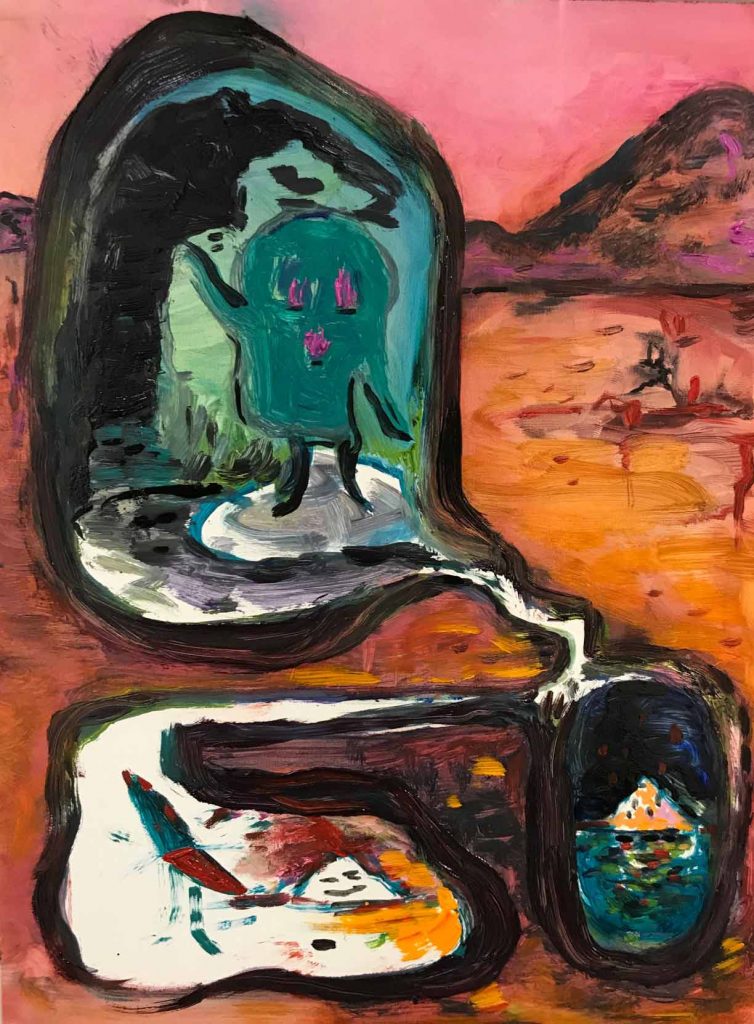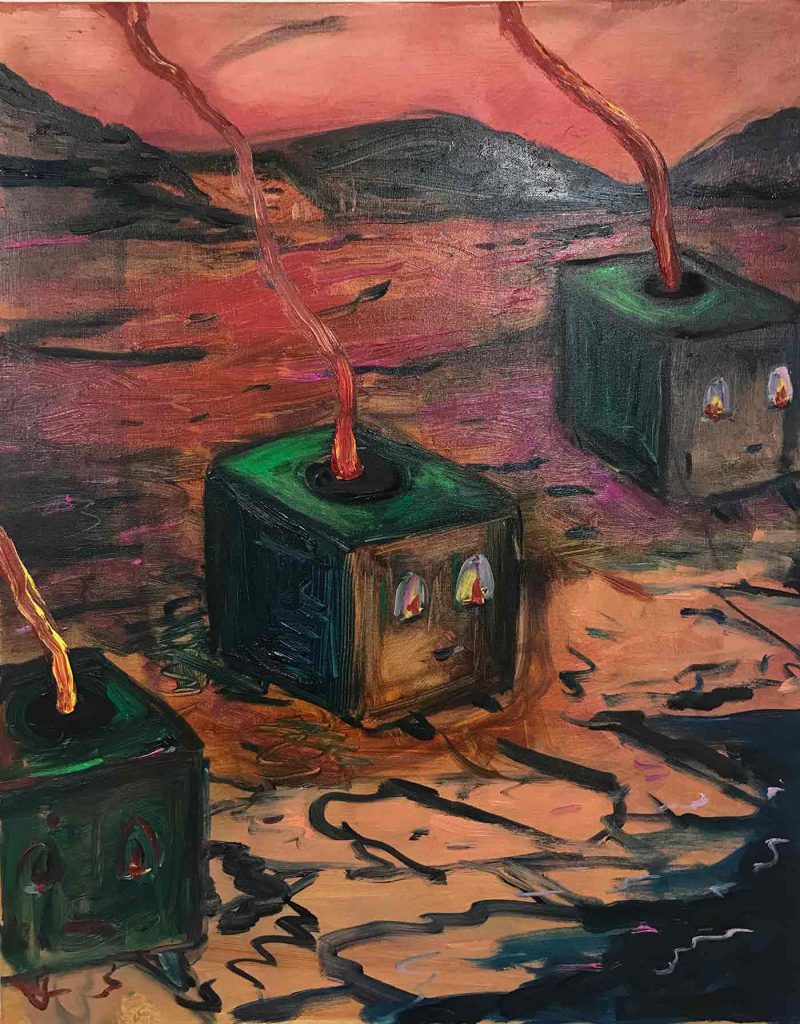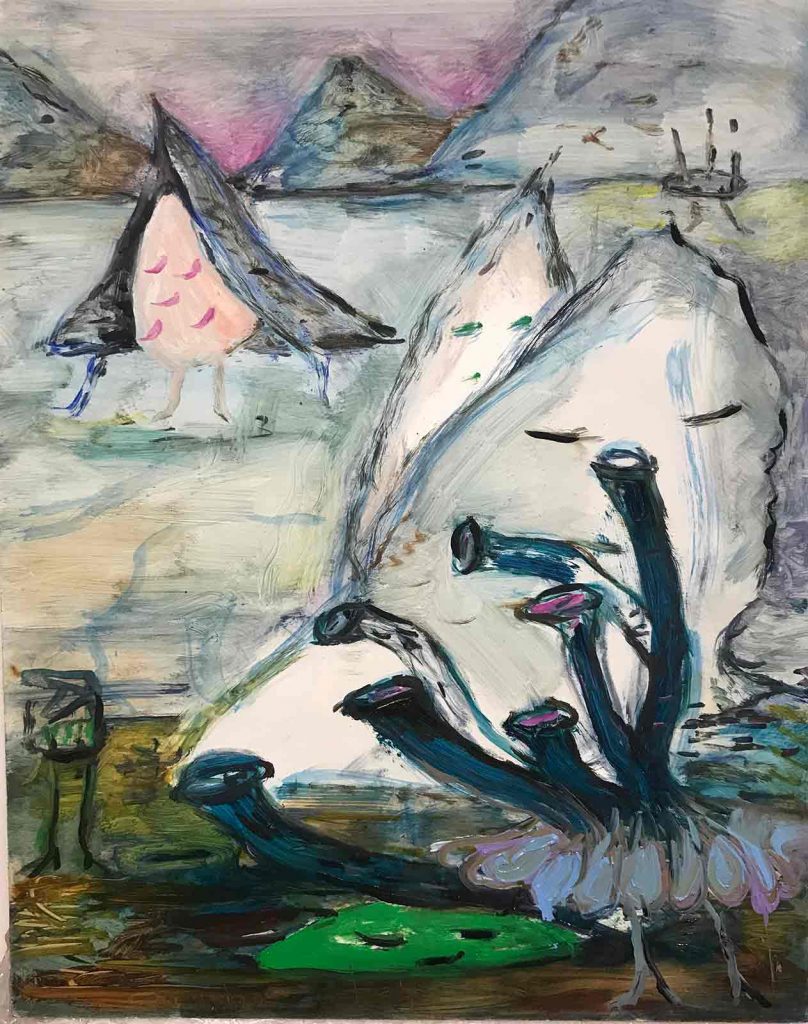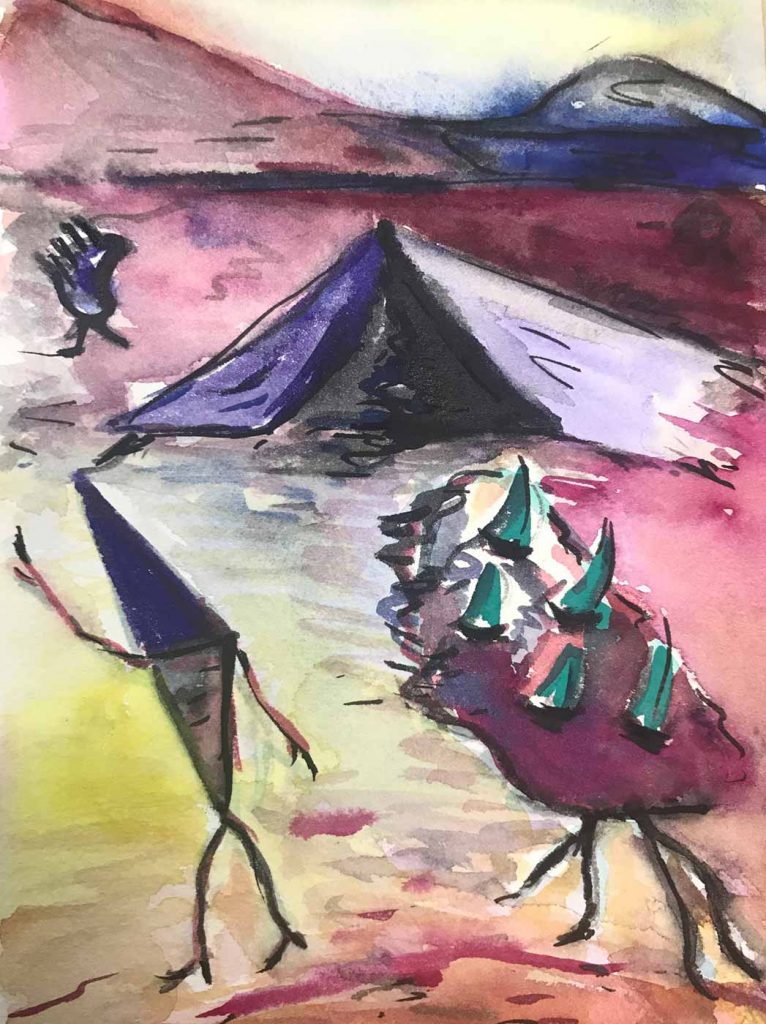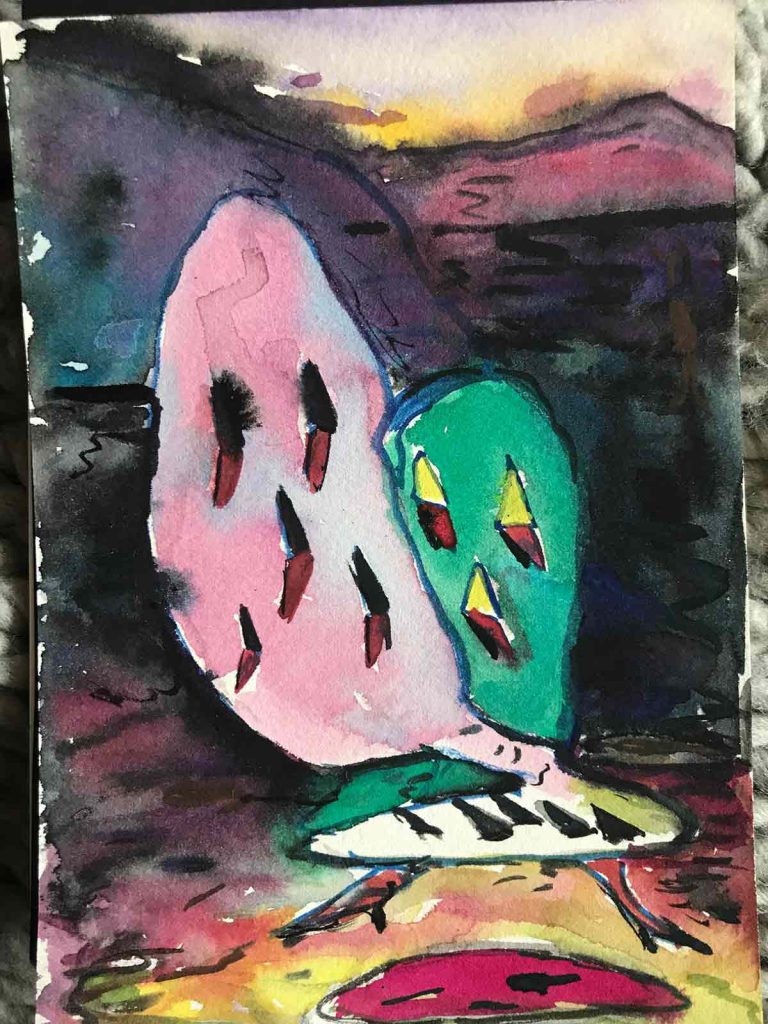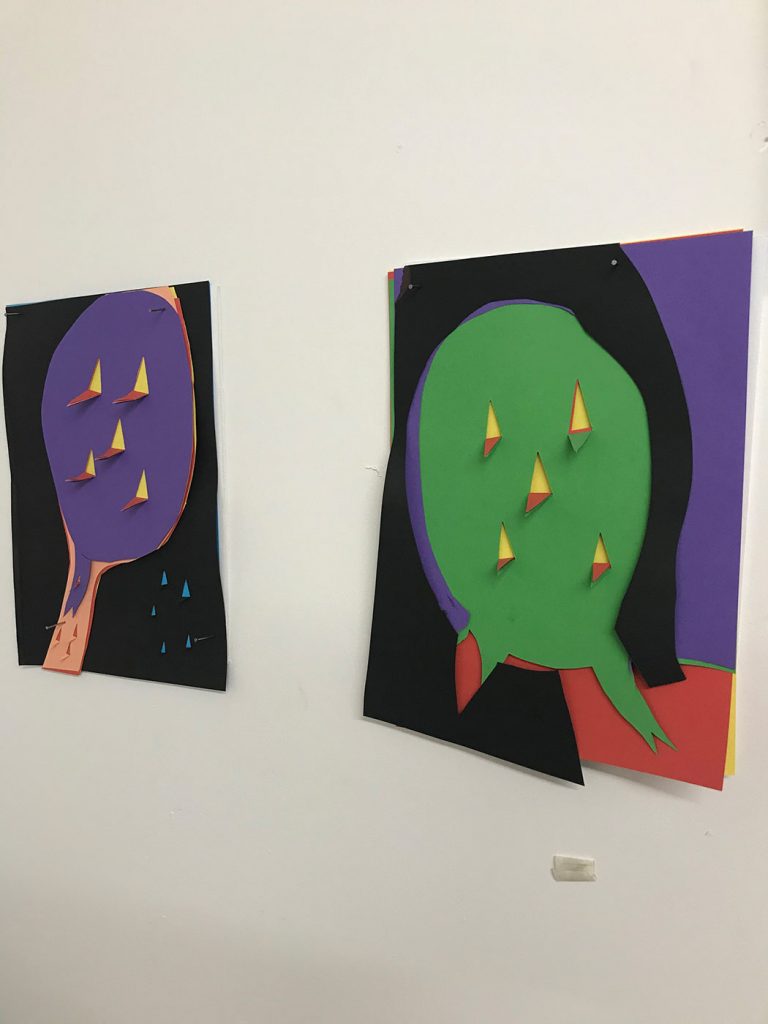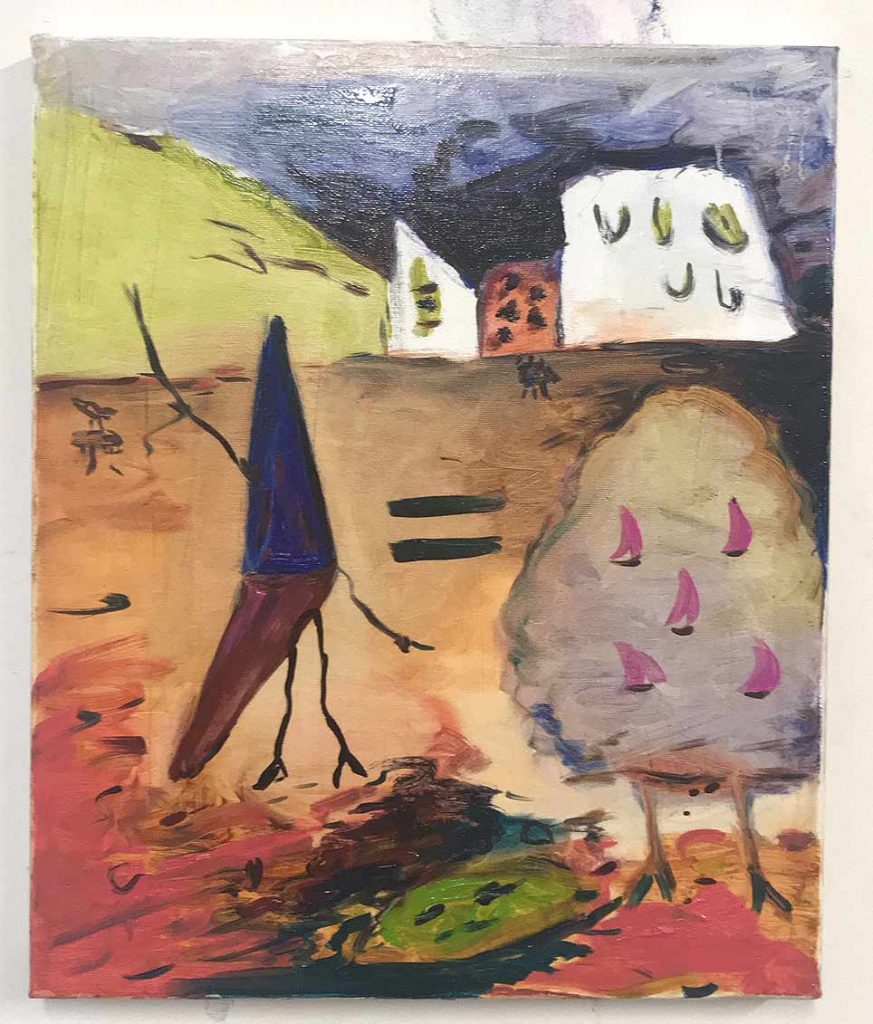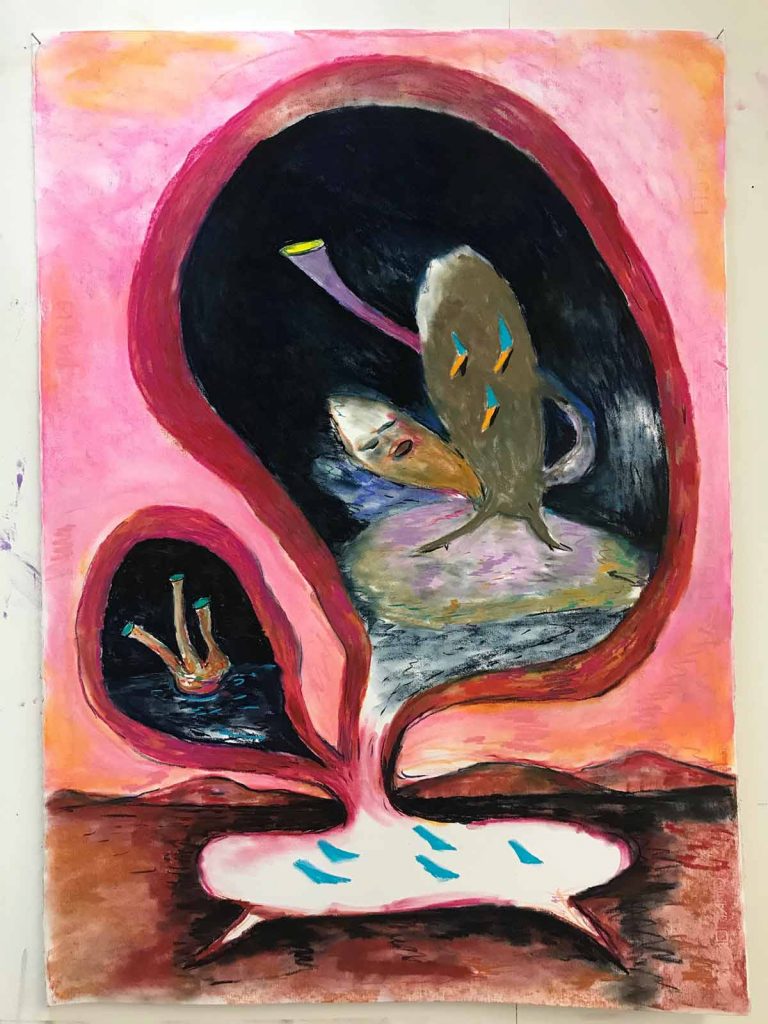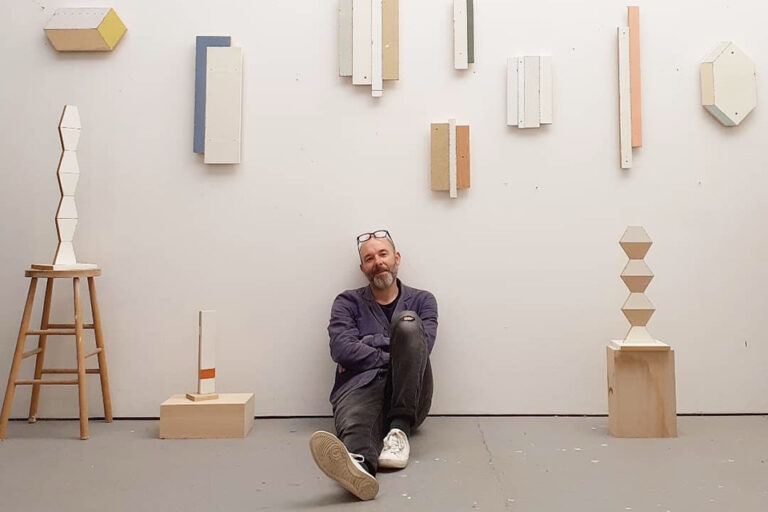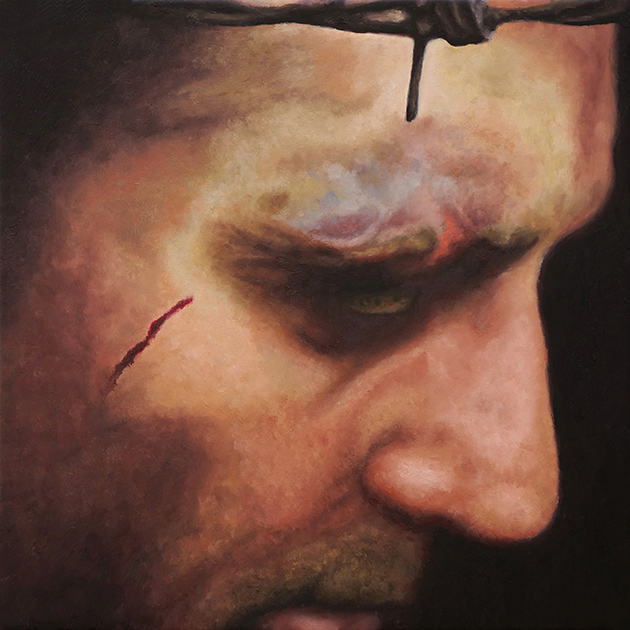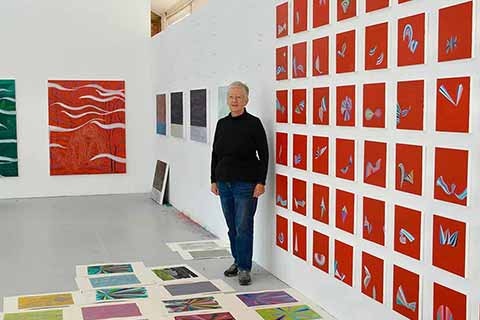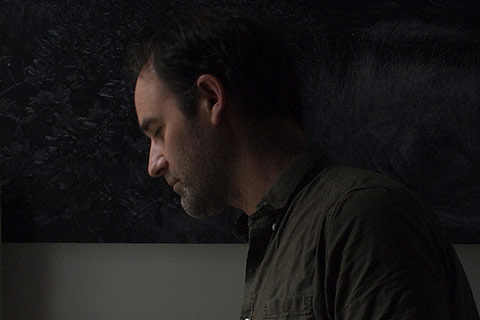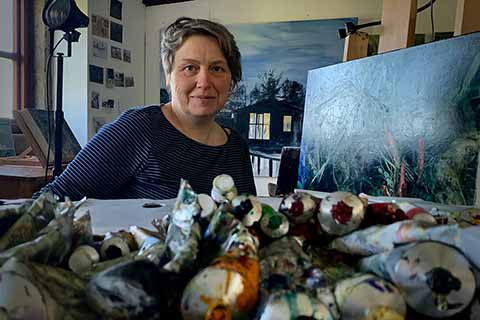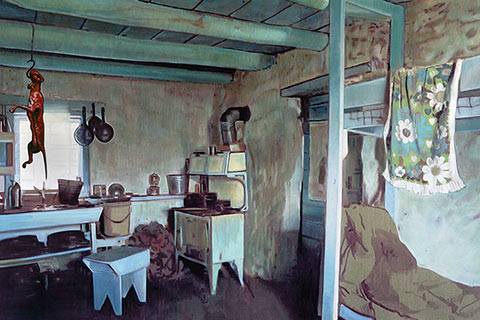Alison Pilkington: Artist of the Month
Artist of the Month September 2020: Alison Pilkington, selected and interviewed by Paul Newman.
CBP: Viewing your recent paintings and to paraphrase what they look like, the painterly world of Alison Pilkington depicts fidgety cartoonish figures jostling for space in portals within desert landscapes. There’s a humorously troubled psychological tone balanced with perhaps a playful optimism. You have discussed in previous interviews about the relationship between generating imagery and narrative and being intuitively led by the medium of paint. Can you talk about where you are now with these works, their journey, what they could represent and their intrinsic relationship with the medium?
Alison Pilkington: The imagery in my paintings is evolving. In recent years the work has moved away from a quasi-abstract figure and ground compositions to something more narrative and complex. I draw from a variety of eclectic influences from ‘high’ and ‘low’ culture. From the classical painting of the 17th century, to the writing of Stephen King, James Joyce and the humourist Ivor Cutler. I frequently return to motifs and imagery and reuse and rework them into other paintings. I consider my paintings as visual problem solving. I am currently in the middle of a new body of work as I am working towards a major show of my work in January. The show is exploring a series of personal narratives that have been developed over a number of years and paintings. In this recent series of work I am thinking about ‘hollows’ as visual and psychological spaces that we might inhabit. These hollows contain places and not-quite creatures. I also consider the hollows to be alternate narrative zones or spaces where things can happen simultaneously (coming from my love of science fiction) all this is explored through the process of painting and drawing which have limitless possibilities for me to explore all these ideas.
CBP: The triangles with flaps and illusionistic shadows are a recurring motif. They look like they could be influenced from a paper collage model. Could you talk about the relationship of drawing, collage, or other forms of preparatory studies for the paintings.
AP: Yes I do use paper collages and little maquettes as sources and preparatory material. I have been making little models for many years for paintings – I have shown them in shows but generally these are studio pieces. For now I prefer to keep them in the studio for reference but I may expand on them into larger sculptural forms and site-specific pieces. The cut-out shape is transformed through the painting process and can represent various things. I try to keep it open-ended for the viewer but for me it’s like peeping into my unconscious, or trying to. It’s also about cutting through modernist tropes around flatness and surfaces of painting albeit in a playful way.
CBP: There’s a really juicy colour scheme of emerald greens, pinks and succinctly placed white in these recent paintings, its feels like a distinct phase. Can you talk about this colour scheme, how you explore colour intuitively or otherwise.
AP: I tend to decide on colour schemes for paintings early on in the process such as tonal values within paintings and also whether I am glazing or using matt or satin varnishes. So initially there is a lot of pre-planning and buying of colours I need. I do a lot of mixing as well beforehand. But then when the process starts it becomes more intuitive. Sometimes colours aren’t working for me so I abandon them. I often have to leave a painting for a while, even get out of the studio for a walk and think or even leave it for days or weeks. Often a colour scheme might present itself to me – like the side of a building against the sky or something while flicking through a magazine. I might not have been looking for it at that moment but unconsciously my mind was ticking over, looking for the right palette. That happens a lot to me so I go with it and see where it takes me. Currently I am exploring darker tones in the work. I have seen it in Baroque paintings and also in the twilight late summer western skies. This is a recurring palette in the recent work.
CBP: You have complimentary titles to your ‘lyrical’ paintings which are poetic and enigmatic. How do you choose your titles and is there in relationship to literature or written language in your paintings?
AP: Titles are important to me. I spend time thinking and writing them and playing with them. I consider the titles as a form of poetry that compliments the paintings. I am always trying to give the viewer an ‘in’ to what I am thinking about and what I am trying to express within the work whilst acknowledging that the work will function independently of titles. I am often inspired by specific pieces of literature. I like to focus on how prose functions within language. I see my paintings as attempts to create visual prose, to conjure images for the viewer. When I reflect on the some of the recent work I have made during lockdown, it appears charged with an unsettling sense of dramas unfolding, of chance encounters and places inhabited but not quite known. The show I am currently working on is exploring this idea of narratives and dramas unfolding. It is also tapping into childhood memories, half remembered places and encounters.
CBP: Who are your favourite and influential painters? Maybe favourite and influential are separate.
AP: That’s a very difficult question to answer. I look at many artists not just painters, some for inspiration others because I admire them or want to learn more about them. My influences are quite eclectic too, sometimes I don’t even consciously know where an image comes from but then I might realise, for example that some of the El Greco paintings that I have recently seen are seeping into the work. I love the drama and scale of 17th century paintings. I love anything with a narrative but also I equally love a painting that is absolutely ‘itself,’ that it sits happily in it’s own skin. A good painting does that regardless of style. Like most painters, I look at how a painting is constructed, brush marks, attention to tone colour surface, scale etc these are all the things I think about in my own work. I look at work online but we all know it’s not the same. It’s impossible to see a lot of international shows at the moment when you don’t live near any major art capitals like London or Berlin. I am finding looking at work in books and catalogues much more satisfying than online.
CBP: You have completed your PhD which you have talked about in previous interviews. As well as the research and thinking around your subject, how did it influence the material process of painting itself for you? – If they can be separated.
AP: When researching my PhD early on I realised that ideas and how they are translated through the materiality of paint was important to me. The research took a lot of frustrating cul de sacs but over time I figured out what I wanted to do. I wanted to research ideas through the material and medium of painting so that took centre stage. I am also interested in the staging of paintings and of how light is invented for the viewer within paintings. I have said before it’s the quality of paint handling that always interests me, although seemingly casual, it is a result of repeated attempts at getting something ‘right’ for me
I explored and researched all of these aspects of painting while trying to understand how the uncanny as an experience or an idea can be felt for the viewer when looking at a painting.
CBP: What is your current studio practice / routine at the moment?
AP: Currently I am spending long days in the studio, I try to get in early around 10. I spend the day usually working on one painting. As I am at present working towards a solo show so I am planning how pieces will work together, but that usually changes when I get the work to the space. I am a dedicated ‘oil on canvas’ painter but I don’t use turps any more. I also do a lot of watercolours and oil on gesso boards. I try not to overplan paintings but I have a large stock of drawings and notebooks that I use to work out and sketch in. Some of these become paintings but the key for me is to carry the spontaneity of the drawings through to the paintings. If that isn’t happening for me I might scrub it out and start again the next day. Painting is a very performative process for me so I try not to get too stressed if its not working and I have to scrub it out. I try to see that process as a rehearsal for the next one. Sometime I will take a photo of my work and look at it that night at home just to analyse it on the small scale of the camera screen to see what is working or not working.
Alison Pilkington is based in Dublin. She is currently working towards a major solo show of her work to be presented at the Model Arts & Niland Gallery, Sligo Ireland.




